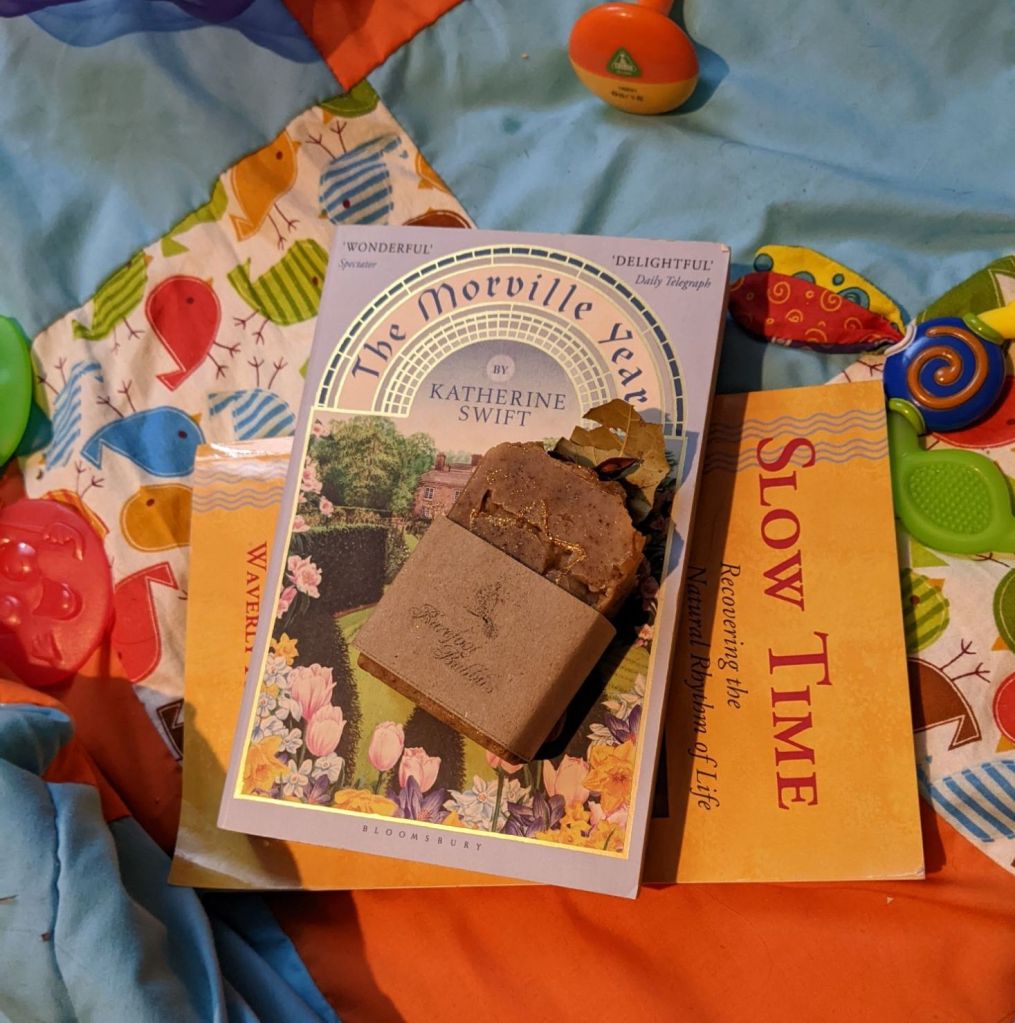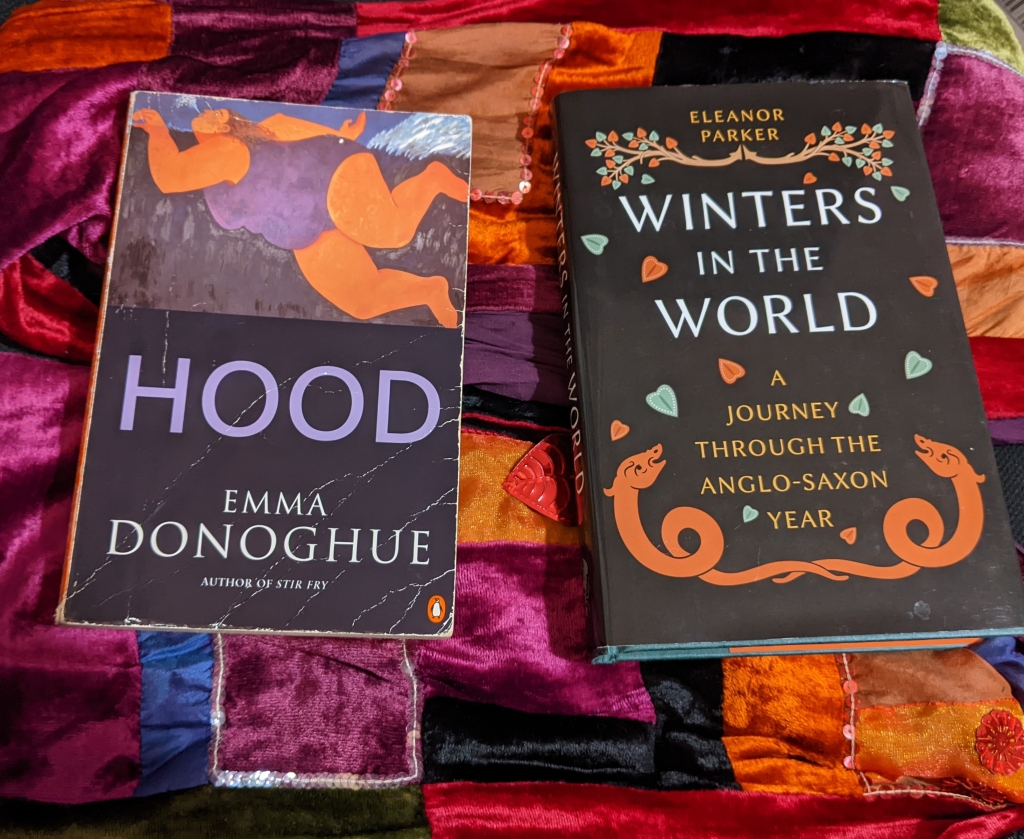
I don’t know where this year’s gone. (I mean, I know exactly why it’s gone, but that isn’t quite the same thing.) Which is unusual for me, because I usually make a point of being aware of where I am in time.
These last few days, though, it’s all seemed to settle down, though not on account on anything I’ve done myself. The Morville Year, which I’d bought and immediately lost in the extra safe place in which I’d hidden the present I bought at the same time, turned up (as did the present – too late for the birthday for which it was originally intended, but just in time for Christmas). I loved The Morville Hours and the way it moves gently through the cycle of the year, and have been looking forward to reading this, a collection of related articles.
Slow Time is an old friend, a book that’s encouraged me to explore the calendar and the traditions in which I grew up. And one thing that I have already noticed about organised children’s activities is that they are very keen on seasonal themes, so it ought to get easier from here on in.
One last thing. I was amused to note, firstly that I’d run out of my previous soap bar just in time to start the Christmas Spice one – and secondly, that the one I’ve just finished (and had been using all through Advent) was called Wake Up Call. If you know, you know.

